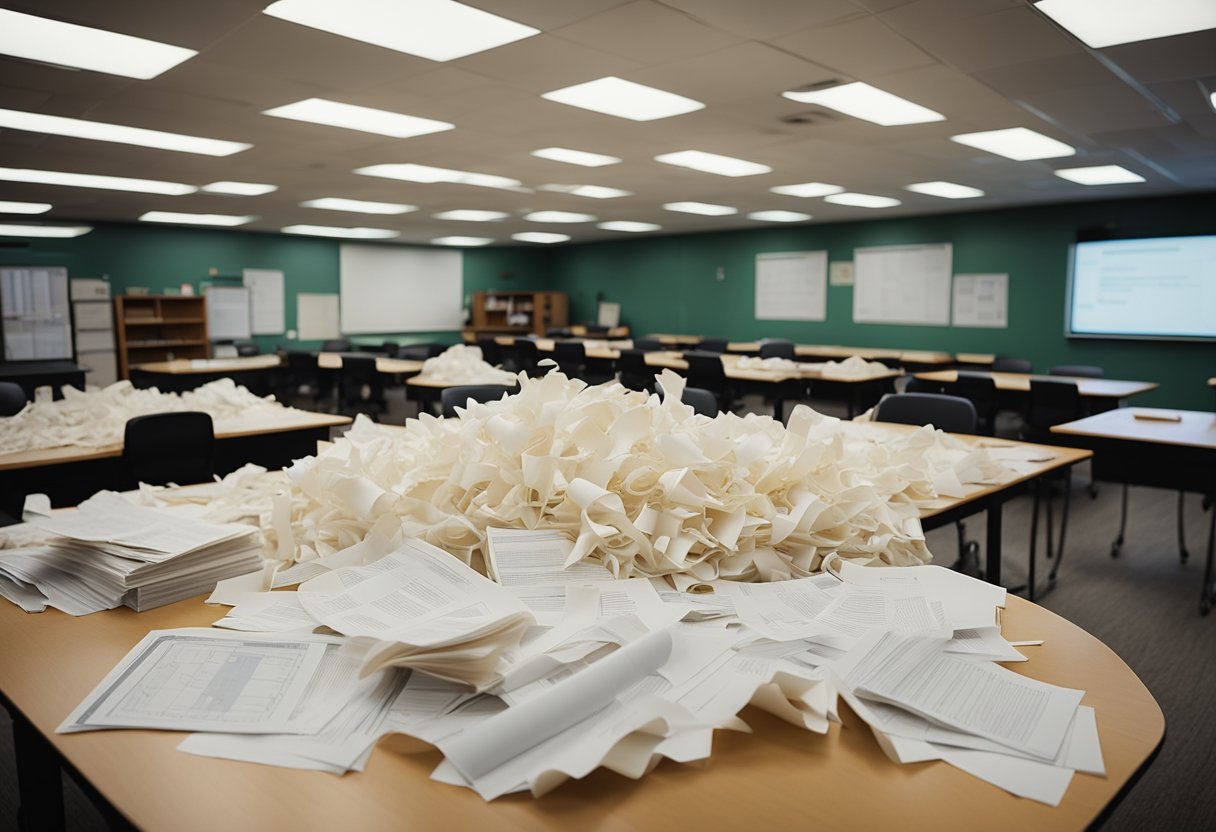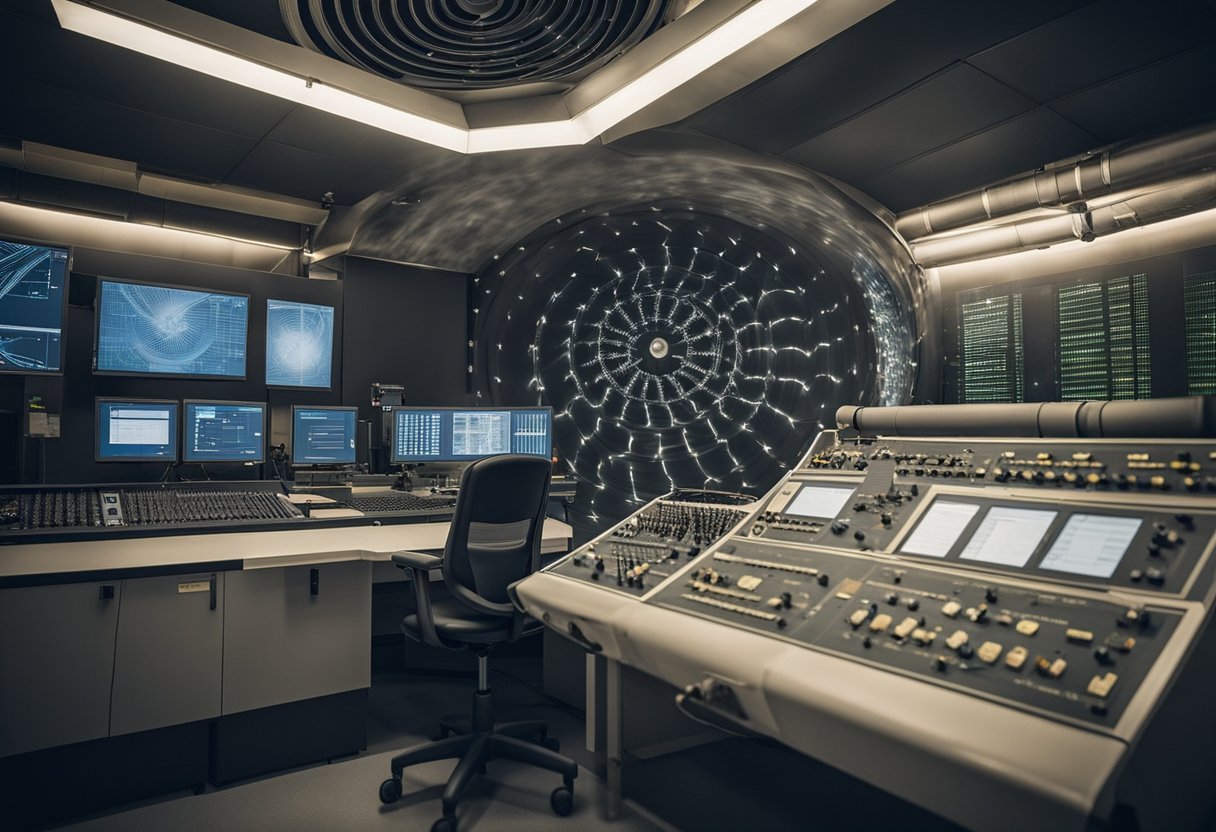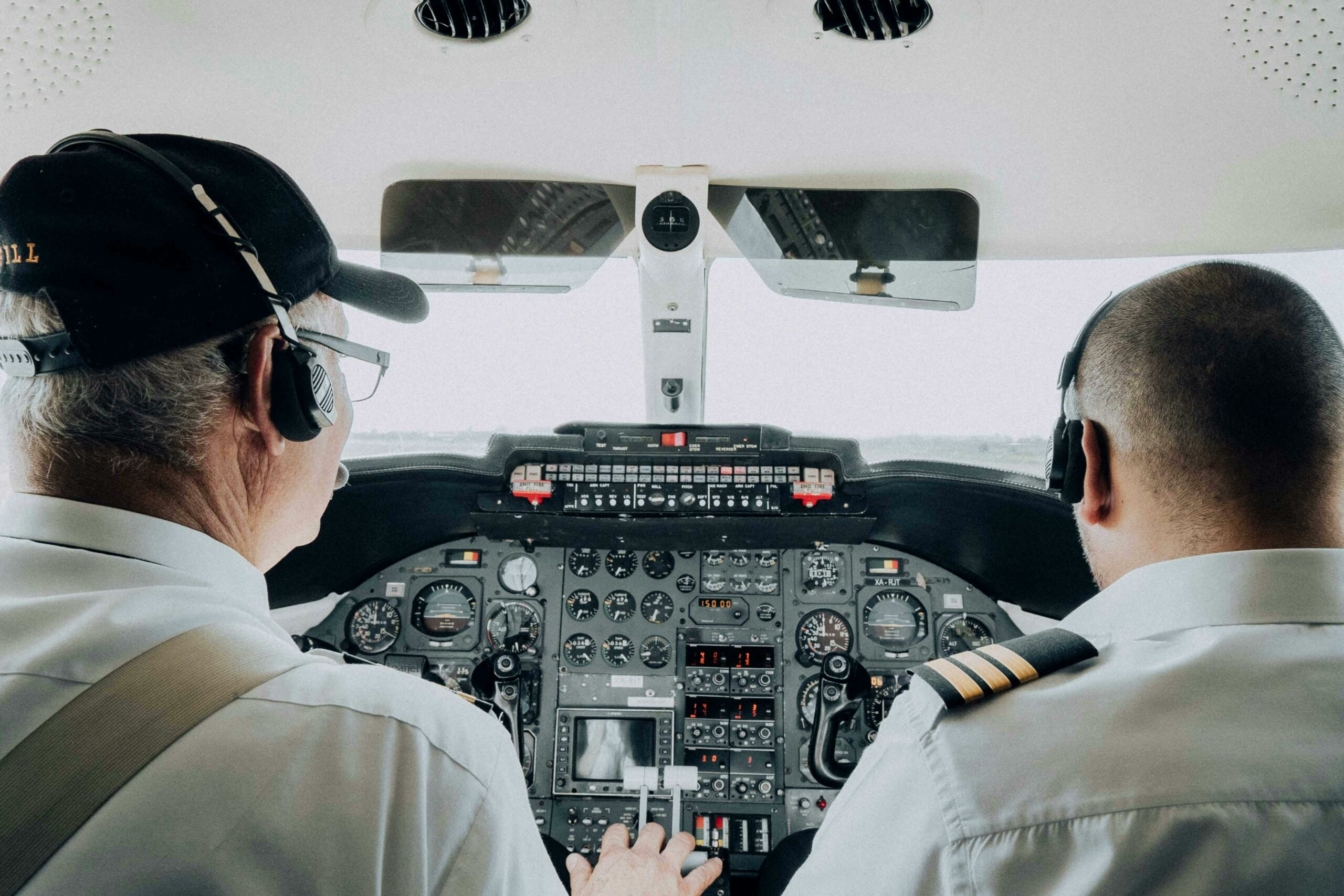Research and Education: Navigating the Complexities of Turbulence

Research on turbulence is an important avenue for universities. Turbulence, the irregular or chaotic movement of fluid, affects many aspects of modern life, from the efficiency of transportation systems to the predictability of weather patterns. Within the realm of academic settings, the study of turbulence is a critical component of civil and environmental engineering programs. Here, researchers analyze the complexities of turbulent flow to improve the design of infrastructure, such as bridges and skyscrapers, and to deepen the understanding of natural phenomena like river currents and atmospheric disturbances.
In educational environments, students and professors alike explore the mathematical models and physical principles that underpin turbulent flows. This understanding is fundamental in devising solutions to real-world engineering challenges. By investigating the dynamics of turbulence, scholars contribute to the development of more durable structures and environmentally friendly engineering practices. The analysis of turbulence also crosses into other domains of science and engineering, showcasing the highly interdisciplinary nature of this field.
These academic undertakings are not just theoretical. They frequently involve hands-on experiments in state-of-the-art facilities, such as wind tunnels and water flumes, coupling empirical research with advanced computational methods. The implications of this research touch on a multitude of areas, from reducing pollution to enhancing the safety and reliability of engineering projects. As such, the academic study of turbulence stands as a cornerstone in the education of aspiring civil and environmental engineers, equipping them with the expertise to manage one of the most unpredictable yet omnipresent forces in nature.
The Nature of Turbulence

Turbulence is a complex and dynamic phenomenon that affects various natural systems and academic fields. Its unpredictability and chaotic nature require rigorous analysis and sophisticated mathematical models to better understand it.
Defining Turbulence
Turbulence refers to the irregular, chaotic flow of a fluid, which includes liquids, gases, and plasmas, disrupting the laminar flow that is characterized by smooth, orderly layers. It is a nonlinear dynamic process with many interacting scales of motion. In fluid dynamics, the Reynolds number is a dimensionless quantity used to predict the transition from laminar to turbulent flow, expressed as:
[ \text{Re} = \frac{\rho UL}{\mu} ]
where:
- ( \rho ) is the fluid density
- ( U ) is the velocity of the fluid
- ( L ) is the characteristic length
- ( \mu ) is the dynamic viscosity of the fluid
Turbulence in Natural Systems
Turbulence manifests in a variety of natural systems, ranging from ocean currents and river flows to atmospheric weather patterns and cosmic gas clouds. It plays a crucial role in phenomena such as:
- Weather systems: where it influences cloud formation, precipitation, and wind patterns.
- Astronomy: where it affects star formation and the distribution of cosmic dust and gas.
These real-world systems offer countless examples of turbulence, providing data for empirical study and validation of theoretical models.
Mathematical Modeling of Turbulence
Mathematical models aim to describe the statistical properties of turbulent flows due to the difficulty of predicting the behavior of each eddy and fluctuation. A widely used approach is the Navier-Stokes equations, which are a set of non-linear partial differential equations governing the motion of viscous fluid substances. To simplify these complex equations under turbulent conditions, approaches such as:
- Direct Numerical Simulation (DNS): where all scales of turbulence are numerically resolved, but computationally demanding.
- Large Eddy Simulation (LES): simulating large-scale eddies while modeling the smaller scales.
These models form the basis for further analysis and studies into the properties and effects of turbulence in various academic disciplines.
Turbulence in Academia

The exploration of turbulence in academia often refers to the complexities and multifaceted nature of studying disorderly flow phenomena within educational environments.
Study Approaches
Experimental Studies: Researchers typically conduct experiments in wind tunnels or water channels to visualize and measure the properties of turbulence. These studies contribute to a comprehensive thesis on the dynamics of turbulent flows, often resulting in significant articles published in academic journals.
Computational Studies: Simulation of turbulent flows requires advanced computational methods. Degree programs in computational fluid dynamics provide students with the necessary skills to model turbulence, which is crucial for their professional success and societal applications.
Interdisciplinary Perspectives
Engineering and Physics: The study of turbulence is rooted in these disciplines. Understanding the mathematical principles and physical behavior of turbulent flows enables insights across engineering applications.
Environmental Science and Meteorology: Turbulence affects atmospheric and oceanic currents, making it essential for interdisciplinary research. Climate scientists integrate turbulence studies within their assessments of environmental impact and weather prediction models, reflecting the importance of this phenomenon in broader societal contexts.
Academic Challenges
Funding Constraints: Obtaining financial support for turbulence research can be challenging. A detailed proposal is often required to demonstrate the potential contributions to science and society.
Data Analysis: The vast amount of data generated from turbulence studies can be overwhelming. High-performance computing resources coupled with sophisticated data analysis techniques are pivotal in discerning meaningful patterns within the chaos of turbulent flows.
Techniques in Turbulence Research

Exploring the complexities of turbulence requires a multifaceted approach, merging empirical data with advanced computational methods. Researchers employ laboratory experiments, field studies, and numerical simulations to analyze and understand this phenomenon.
Laboratory Experiments
Laboratory experiments provide a controlled environment for turbulence research. Scholars use wind tunnels and water channels to observe fluid behavior under various conditions. Instruments such as Laser Doppler Anemometers (LDA) and Particle Image Velocimetry (PIV) systems enable precise measurements of velocity and vorticity fields within the flow. These experiments are crucial for testing theoretical models and studying the fundamental aspects of turbulence.
Field Studies
Field studies are imperative for the study of natural turbulence as they occur in atmospheres, oceans, and rivers. Researchers deploy sensors and instruments in real-world environments to collect data on turbulent flows. The use of meteorological towers, equipped with an array of anemometers and flow gauges, allows for the analysis of atmospheric turbulence. Similarly, oceanographic buoys and probes are utilized to study turbulence in marine settings.
Numerical Simulations
Numerical simulations serve as a critical tool for investigating turbulence without the constraints of physical experiments. Computational Fluid Dynamics (CFD) software applies a variety of mathematical models to simulate the behavior of fluids. Direct Numerical Simulation (DNS) and Large Eddy Simulation (LES) are two common methods used to analyze turbulence. DNS resolves all scales of motion, while LES focuses on larger eddies and approximates smaller scales to reduce computational load. These simulations help researchers visualize complex flow patterns and validate theoretical predictions.
Practical Applications of Turbulence Studies

The section explores significant applications of turbulence research, particularly focusing on its influences in engineering design and environmental management.
Engineering Applications
In the realm of civil engineering, turbulence studies are foundational for designing structures that can withstand the forces of wind and water. They investigate how flows interact with buildings, bridges, and vehicles, leading to safer and more efficient designs. For example, the study of wind turbulence is critical in the creation of skyscrapers, ensuring they can tolerate high winds and vortex shedding, which can cause swaying or structural fatigue.
Aerospace engineering also heavily relies on turbulence research. Optimizing the shapes of aircraft and spacecraft to minimize drag and improve stability during turbulent airflows leads to enhanced performance and fuel economy. This is achieved through exhaustive wind tunnel testing and computational fluid dynamics simulations.
- Key aerospace applications of turbulence studies:
- Drag reduction: Designing smoother surfaces and modifying shapes to decrease resistance.
- Flight stability: Understanding turbulence impacts on aircraft to enhance control mechanisms.
Environmental Considerations
Turbulence studies extend into environmental engineering with a focus on the natural aspects and implications of turbulent flows. These studies are imperative for predicting and mitigating the effects of turbulent natural events such as floods, storms, and landslides.
Turbulence in water bodies — such as rivers, estuaries, and oceans — is of particular interest. It affects sediment transport, ecosystem health, and pollutant dispersal. Engineers use this knowledge to design effective erosion control measures, waste management systems, and to restore habitats disrupted by human or natural activities.
- Environmental applications of turbulence:
- Erosion control: Establishing barriers and buffers to protect land from aggressive water flows.
- Pollution dispersion models: Creating models that predict how pollutants spread in air and water, shaping environmental regulations and cleanup strategies.
Correspondence Between Theory and Practice

In turbulence studies within academic settings, the alignment of theoretical models with practical applications is critical. This correspondence ensures that theoretical advancements translate effectively to real-world scenarios, enhancing predictability and control of turbulent systems.
Case Studies
Case studies in turbulence research highlight the intricate relationship between theoretical predictions and experimental observation. For example:
- A landmark study at the MIT Fluid Dynamics Lab demonstrated a near-perfect match between theoretical forecasts and lab-scale vortex behavior, validating key turbulence models.
- Researchers at Stanford University’s Flow Physics and Computational Engineering group observed that particle image velocimetry, an advanced flow visualization technique, correlates strongly with predictions of turbulent energy cascades, emphasizing the practical reliability of theoretical frameworks.
These instances underscore the importance of empirical validation in establishing the practical significance of theoretical constructs.
Real-world Implementations
The application of turbulence theories to practical situations is evident in several sectors:
| Field | Application |
|---|---|
| Aviation | Models of turbulence have been applied to improve flight safety and aerodynamics |
| Marine Engineering | Hull designs incorporate turbulence calculations to enhance fuel efficiency and reduce drag |
| Environmental Science | Turbulence models aid in predicting and managing weather events and pollutant dispersion |
Direct correspondence between theory and practical applications is evident in industries that benefit from improved predictability and response strategies stemming from robust turbulence studies.
Education and Turbulence Studies
Integrating turbulence studies into the education system bridges fundamental physics and real-world applications. It ensures that graduates are equipped to tackle complex fluid dynamic challenges in society.
Curricular Developments
Academic institutions have begun to formally incorporate turbulence studies into their curriculum. Core courses often cover:
- Basic fluid dynamics: Fundamental principles that govern the behavior of fluids.
- Advanced turbulence modeling: In-depth analysis and modeling techniques specific to turbulent flows.
- Computational fluid dynamics (CFD): Utilization of numerical methods and algorithms to solve problems involving fluid flows.
Curricula are designed to be cohesive, with each course building upon the previous. For example, CFD courses may require prior knowledge of basic fluid mechanics and mathematical methods. Interdisciplinary programs might blend physics, engineering, and environmental science, reflecting the multifaceted nature of turbulence and its impacts on society.
Degree offerings range from Bachelor’s to PhD levels, where the complexity and specificity of turbulence studies increase. Some institutions have pioneered specialized degrees focused solely on fluid dynamics, preparing students for careers that directly address societal issues related to environmental flows, weather forecasting, and aerospace engineering.
Teaching Methodologies
Teaching methodologies for turbulence studies combine theoretical instruction with practical application. Strategies include:
- Lectures: For conveying fundamental concepts.
- Laboratories: Where students can observe and measure turbulence in controlled settings.
Additionally, simulation plays a critical role. Coursework often features assignments that require:
- Simulation software: To predict and analyze turbulent flows.
- Research projects: That involve data collection and interpretation, fostering critical thinking and problem-solving skills.
Interactive learning through case studies and group projects helps students understand the societal implications of turbulence, such as its role in pollutant dispersion or energy systems. Emphasis on hands-on experience ensures that students can apply theoretical knowledge to real-world scenarios, making graduates valuable assets in industries where fluid dynamics are pivotal.
Future Perspectives
In the rapidly evolving field of turbulence studies, advancements are anticipated to transform the academic landscape through new technologies, collaborative efforts, and research methodologies.
Emerging Technologies
Advanced Computational Models: The development of new computational tools will enable more precise analysis of turbulence. Researchers foresee models that can simulate complex fluid dynamics at unprecedented scales and resolutions.
Machine Learning Algorithms: Machine learning is poised to offer novel insights into turbulence management. Studies will likely leverage these algorithms to recognize patterns and predict behaviors within turbulent systems, enhancing both theoretical understanding and practical applications.
Interdisciplinary Collaboration
Shared Knowledge Bases: A structured approach to sharing interdisciplinary insights will enrich the study of turbulence. Experts anticipate databases that integrate findings from fields such as engineering, physics, and environmental science.
Cooperative Research Initiatives: Scholarly collaborations across different disciplines are expected to lead to more well-rounded and robust analyses of turbulence phenomena. These initiatives will likely break new ground in both fundamental research and applied science.
Future Research Directions
Refinement of Measurement Techniques: Precision in measuring turbulence metrics is critical. Future research will likely focus on refining instruments and methods to capture detailed turbulence data.
Sustainability and Turbulence: With the growing emphasis on environmental sustainability, studies might explore how to mitigate the impact of turbulence on ecosystems and human structures, leading to more sustainable practices in various industries.

